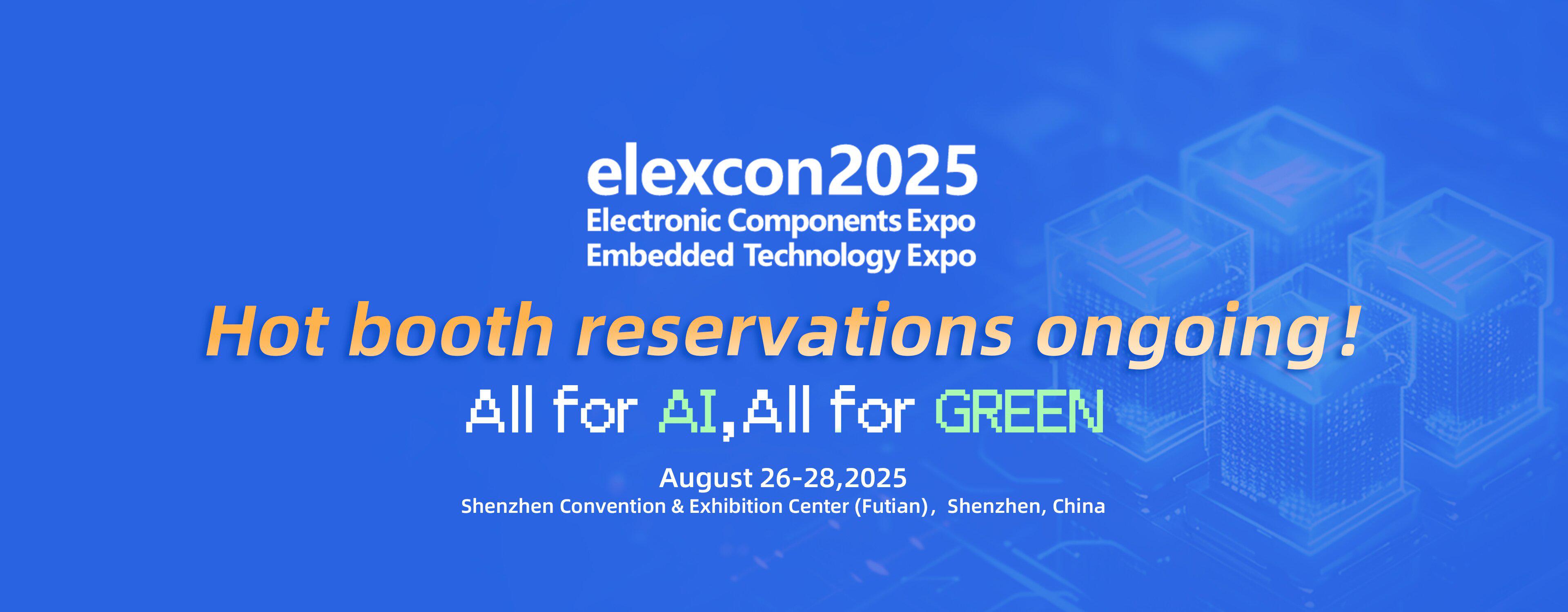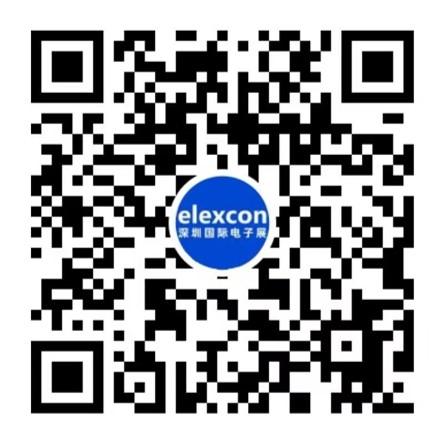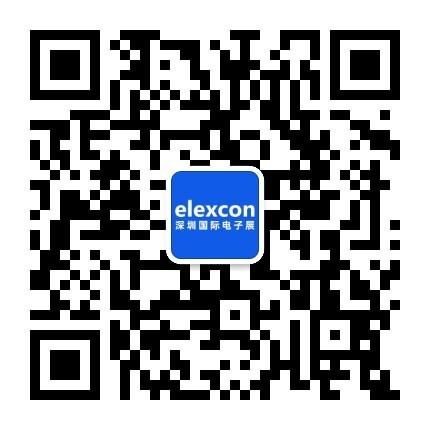2025 Chip Exhibition (Shenzhen International Electronics Show) Focus: Exploring the Latest Trends and Innovative Technologies in the Chip Industry
In 2025, the diverse storage demands of AI applications are reshaping the entire industry chain in all aspects. From large - scale data centers to cutting - edge edge computing, from popular smartphones to advanced autonomous driving, the requirements for memory present four core trends: large capacity, high bandwidth, low latency, and low power consumption. International giants and domestic manufacturers are accelerating their layout and launching innovative products suitable for different AI workloads. elexcon2025 Shenzhen International Electronics Show has compiled some notable manufacturers and their representative products:
International Manufacturers' Technological Iteration Leading High - Performance Storage
1. Samsung Electronics: The HBM4 customized solution has a single - chip capacity of 48GB, supports customer IP integration, and has a 30% higher bandwidth density than HBM3, suitable for heterogeneous computing scenarios of GPUs and AI training chips. The DDR5 RDIMM 32GB: A single chip has a capacity of 32GB, supports a maximum of 256GB DDR5 memory configuration, and has a speed exceeding 12.8GB/s, meeting the computing power requirements of AI servers. The UFS4.1 storage solution enables smartphones to run AI models with millions of parameters. The 8TB dedicated SSD takes into account both high capacity and heat dissipation design. Its large - capacity SSD product line has covered 16TB to 256TB, providing underlying support for AI training and data centers.
2. Micron Technology: The HBM3E memory module stacks 16 layers of DRAM chips, with a bandwidth exceeding 1.5TB/s. The MR - MUF process is used to optimize heat dissipation, which is suitable for NVIDIA's Blackwell - architecture GPU and improves AI rendering efficiency. The 6500 ION SSD has a capacity of 30.72TB, supports NVMe 2.0, and is suitable for large language model (LLM) training and inference, with a 25% increase in energy efficiency ratio. The PCIe 5.0 SSD 4600 has a sequential read speed of 14.5GB/s and a write speed of 12GB/s, with a power consumption of only 7W, suitable for AI inference on the PC side.
3. KIOXIA: The eighth - generation BiCS FLASH QLC has a capacity of up to 2TB, a transmission rate of 3200MT/s, and a 70% increase in write energy efficiency, which is used in enterprise - level SSDs and data centers. The automotive - grade UFS 4.0: With a capacity of 512GB, it supports an operating temperature range of - 40~105℃, meeting the data storage requirements of autonomous driving.
4. SanDisk: The iNAND MC EU711 UFS4.1 has a sequential read speed of 4000MB/s and a write speed of 3000MB/s, supports a large capacity of 1TB, and is suitable for on - device AI inference in smartphones. The Sandisk DC SN861 enterprise - level SSD: With a PCIe 5.0 interface and a capacity of 16TB, it has passed the NVIDIA GB200 certification and accelerates the deployment of LLM. The automotive - grade SSD AT EN610: With an M.2 1620 BGA package and support for SLC mode, it is suitable for the central computing architecture of intelligent driving.
5. Solidigm (a subsidiary of SK Hynix): The D5 - P5336 enterprise - level SSD has a capacity of 122TB, uses QLC technology, supports the PCIe 5.0 interface, and has a 4K random read performance of up to 2500K IOPS, specifically designed for AI training clusters. The D7 - PS1010/D7 - PS1030: With 176 - layer TLC NAND, it has a sequential read speed of 14.5GB/s and a maximum capacity of 15.36TB, specifically designed for AI servers.
Domestic Manufacturers' Technological Breakthroughs Seizing the Domestic Market
6. Yangtze Memory Technologies Co., Ltd.: The X3 - 6070 QLC flash memory has a P/E cycle life of 4000 times, a speed of 2400MT/s, a 70% increase in density, and significant cost advantages. The PCIe 5.0 SSD: With the Xtacking 4.0 architecture, it has a full - speed read speed of 14GB/s, supporting AI training and inference. The Xtacking 4.0 QLC NAND: A single - chip capacity of 2Tb, with a bit density 2.3 times higher than the previous generation, supports the mass production of 1TB TLC products, suitable for large - capacity storage in AI servers.
7. Longsys: The self - developed UFS 4.1 controller WM7400 can support both TLC and QLC NAND Flash simultaneously. It has a sequential read speed of up to 4350MB/s, random read and write speeds of up to 750K / 630K IOPS, and a maximum capacity of up to 2TB. It helps on - device AI products (such as AI phones, AI tablets, smart cars, humanoid robots, etc.) achieve real - time decision - making in complex applications and enjoy a smooth experience. Self - developed automotive storage controller: Automotive - grade storage products cover UFS, eMMC, LPDDR4x, SPI NAND Flash, etc., building a "dual - wheel drive" system of automotive - grade Flash and DRAM. Longsys has been independently designing and developing core IP, from eMMC and SD controllers in 2024 to UFS and USB controllers released in 2025.
8. GigaDevice: A leading company in NOR + MCU driven by both AI and domestic substitution. NOR Flash: In 2021, it had a global market share of 23% and was the world's third - largest NOR Flash manufacturer, supporting low - power storage for AIoT devices. LPDDR5 memory: It is suitable for on - device AI models in smartphones, improving local computing power and storage efficiency.
9. Yangtze Wanrun Semiconductor: Products such as SSD, PSSD, and eMMC can be widely used in mobile phones, computers, servers, data centers, and other fields, providing strong support for high - performance computing and massive data storage application scenarios. Green storage technology: Through technological innovation, a series of low - power storage products have been launched, further reducing the energy consumption of terminal devices and contributing to sustainable development. Scenario - based solutions: Customized storage solutions are carefully developed for the differentiated needs of different industries, helping terminal customers' product solutions to be implemented quickly.
10. TWSC®: The HBM4 customized solution has a single - chip capacity of 48GB, supports customer IP integration, and has a 30% higher bandwidth density than HBM3, suitable for heterogeneous computing scenarios of GPUs and AI training chips. The DDR5 RDIMM 32GB: A single chip has a capacity of 32GB, supports a maximum of 256GB DDR5 memory configuration, and has a speed exceeding 12.8GB/s, meeting the computing power requirements of AI servers. The UFS4.1 storage solution enables smartphones to run AI models with millions of parameters. The 8TB dedicated SSD takes into account both high capacity and heat dissipation design. Its large - capacity SSD product line has covered 16TB to 256TB, providing underlying support for AI training and data centers.
Technological Trends: How Does Storage Reshape the Future of AI?
•Integration of HBM and CXL Technologies: Through the integrated memory - computing architecture, the combination of HBM4 and the CXL protocol can reduce data transfer latency and improve AI training efficiency.
•Popularization of QLC NAND: Higher - density and lower - cost QLC SSDs have become the standard in AI data centers. Manufacturers such as KIOXIA and Solidigm are promoting capacity breakthroughs of over 100TB.
•Optimization of On - Device Storage: Technologies such as LPCAMM2 and UFS4.0 help smartphones and autonomous driving terminals achieve local AI inference.
elexcon Storage Exhibitor Cluster
The elexcon Shenzhen International Electronics Show has a rich cluster of semiconductor memory exhibitors, including Longsys, Biwin, Skytree, Kingshare, Nippon Chemi - Con, Super Talent, Vastinf, Dongxin, Ranpu, Hikvision Storage, Netac, Orient JuCheng, ADATA, QuanXing, Hongxingyu, Kangying Semiconductor, Yuxin Semiconductor, Kangxinwei, Apacer, Zhifu, Hengshuo, Unisoc, Yangtze Wanrun, Xinghuo, Hengshuo, Kingston, Tigo, TWSC, Huaxingxin, etc.
Looking back at elexcon2024 Shenzhen International Electronics Show, exhibitors such as Unisoc, Longsys, Dongxin, TWSC, Yangtze Wanrun Semiconductor, Skytree, Kangying Semiconductor, QuanXing Technology, Kangxinwei, Hikvision Storage, Yuxin Semiconductor, etc. demonstrated their capabilities, showcasing new memory technologies and products such as SSDs, covering consumer electronics, industrial - grade, automotive - grade, and AI high - performance scenarios.
•Unisoc: At elexcon2024 Shenzhen International Electronics Show, it showcased a variety of cutting - edge products and innovative solutions for key fields such as automotive electronics, artificial intelligence, high - performance computing, industrial control, the Internet of Things, and consumer electronics. Unisoc's new - generation automotive - grade low - power dynamic random access memory LPDDR4/LPDDR4X and other high - reliability automotive - grade chip products and solutions with independent intellectual property rights can be applied to automotive electronic control system fields such as lidar, vehicle - to - everything (V2X) terminals, head - up displays, liquid - crystal instrument clusters, vehicle dynamic control systems, dashcams, and driver monitoring systems. For applications in fields such as artificial intelligence large models and high - performance computing (HPC), Unisoc's solutions of "realizing large - bandwidth, large - capacity embedded storage using embedded DRAM (SeDRAM®) technology at the chip level" and "realizing memory capacity and bandwidth expansion using CXL technology at the system level" achieve tens of TB of memory access bandwidth and tens of GB of storage capacity.
•Kangying Semiconductor: With the theme of "Moving Forward with the Core, Intelligent Storage without Borders", it released three self - developed storage new products, namely the Star River Core Elf - self - developed eMMC embedded storage chip with a controller, the Speed Shadow Core Little Jupiter - self - developed microSD mobile memory card with a controller, and the Portable Storage Core Little King Kong PSSD - portable magnetic - attached mobile solid - state drive. In addition, for AI glasses applications, Kangying Semiconductor launched the ePOP embedded storage chip, which integrates eMMC and LPDDR in one package, not only being smaller in size but also more powerful in performance. By being vertically mounted on the SoC, ePOP saves 60% of the space, with a minimum thickness of only 0.8mm. Currently, this product has been widely used in AI - enabled smart glasses, smart watches, and other wearable devices.
•Hikvision Storage: It showcased its consumer - grade and industry - grade storage products. Centered around the embedded product line, the exhibited products are mainly for servers, vehicle - mounted applications, industrial control, consumer electronics, and other fields. Currently, Hikvision Storage's embedded storage has covered product series such as eMMC, LPDDR, DDR4, SPI NAND, and Parallel NAND, meeting the needs of subdivided markets such as power, telecommunications, transportation, mobile terminals, and smart homes.
•Netac Technology: It showcased multiple product categories such as SSDs, DDR memories, mobile solid - state drives, flash drives, and memory cards, covering numerous application scenarios such as daily office work, entertainment games, and business trips. Among them, star products such as the Jueying NV7000, Jueying RGB memory, and Z2S mobile solid - state drive received much attention.
•Kangxinwei: It comprehensively showcased self - developed embedded storage chips, including eMMC5.1 products. The eMMC memory has achieved mass production in consumer electronics, industrial control, automotive, and other fields, and its products have entered the supply chains of brands such as ZTE, Jiulian, Hisense, Konka, Star - net Rujie, Inspur, and Baolong Automotive, with a cumulative sales volume of over 50 million units (as of July 2024).
•Yuxin Semiconductor: It exhibited a variety of storage products, including high - performance embedded storage eMMC, SPI NAND based on YMTC's latest 3D NAND, memory chips DDR3L/DDR4/LPDDR4x, flash memory chips Raw NAND, high - speed flash cards micro SD, consumer - grade and enterprise - grade SATA/mSATA/M.2 SSDs, PCIe3.0/4.0 SSDs, etc., as well as various storage solutions.
•Skytree: It showcased high - performance embedded storage chips represented by UFS 3.1, LPDDR5, eMMC5.1, and ePOP and their application cases. Among them, UFS3.1 is for AI and flagship smartphones, with sequential read and write speeds of up to 2100MB/s and 1700MB/s respectively, a theoretical bandwidth of up to 2.9GB/s, and a size of only 11.5×13.0×1.0mm, featuring high speed, stable compatibility, and durability and reliability; LPDDR5 has a transmission rate of 6400Mbps, a bandwidth of up to 51GB/s, a working voltage as low as 0.5V, with an overall performance improvement of 50% and a power consumption reduction of up to 30% compared to LPDDR4/4X, combining high performance and low power consumption; eMMC5.1, based on Skytree's self - developed firmware algorithm, has sequential read and write speeds of up to 320MB/s and 200MB/s respectively, with a large capacity of 256GB, featuring small size, high integration, and high reliability.
•QuanXing Technology: The high - end storage products it showcased cover consumer - grade, industrial - grade, automotive - grade, and enterprise - grade categories. Enterprise - grade products include U.2 PCle 5.0 QLC SSD, ES33H01 U.3 NVMe SSD, and DRR4 R - DIMM. In terms of AI products, the QuanXing AI training and inference all - in - one machine is mainly composed of core components such as the QuanXing Tianyi AI expansion card, enterprise - grade solid - state drives, and server memory, including the QuanXing Tianyi AI expansion card, DDR5 R - DIMM, SATA/NVMe eSSD, etc.
elexcon2025 Chip Exhibition in Shenzhen
The elexcon2025 Shenzhen International Electronics Exhibition, organized by UBM Creative Expos, will be held at the Shenzhen Convention and Exhibition Center (Futian) from August 26 - 28, 2025, with the theme of "AII for AI, AIl for GREEN: Providing Comprehensive Technical and Supply Chain Support for AI and Carbon Neutrality". The exhibition will centrally display cutting - edge products, technologies, and solutions such as AI and computing power chips, storage, embedded and AIoT, power and energy electronics, and Chiplet heterogeneous integration ecosystems, fully covering popular fields such as artificial intelligence, new energy vehicles, industrial automation, consumer electronics, the Internet of Things, medical care, and robots, promoting technological innovation and industrial development. Currently, booth reservations are in full swing. Welcome to register!
Exhibition Scope of elexcon2025 Chip Exhibition
Embedded and on - device AI, edge AI computing platforms, AI industrial computers, embedded processors/SoC/MCU/MPU, high - computing - power processor core boards, high - speed storage, RISC - V and open source, intelligent display/HMI, industrial power supplies, wireless communication, OS operating systems, software and tools, other components, solutions, etc.
Target Audience
Professionals in industries such as artificial intelligence, machine vision, industry, automotive, communication, rail transit, medical care, and the Internet of Things, as well as those from colleges, universities, research institutes, etc.
The 7th China Embedded Technology Conference
Forum 1: Integration of AI and Edge Intelligence
Topics: Innovative embedded AI chip architectures, lightweight algorithm deployment, edge - side real - time decision - making applications (such as on - device AI).
Forum 2: Open - Source Ecosystem and Domestic Substitution Opportunities
Topics: Applications of RISC - V in IoT/automotive - grade scenarios, co - construction of China's open - source chip ecosystem, competition and cooperation between RISC - V and ARM ecosystems, Raspberry Pi ecosystem, RT - Thread operating system.
Forum 3: Industrial Control and Applications
Topics: Industrial and automotive chips, industrial embedded basic software, motor control and drive, industrial wired and wireless networks, functional safety and IoT security, industrial intelligent terminals, display technology, and innovative applications of low - power MCUs.
Forum 4: AIoT Intelligent Internet of Things Systems
Topics: End - edge - cloud collaborative AI architectures, customization trends of AIoT chips, vertical industry integration applications (smart healthcare, smart retail, smart homes), industrial Internet of Things, etc.
Forum 5: Embedded Systems and Applications of Embodied Robots
Topics: Real - time motion control algorithms, applications of edge AI in robot decision - making (such as visual servo control), robot operating systems (ROS 2.0) and real - time optimization, modular robot hardware architecture design.
Forum 6: Storage Technology Forum
Topics: Reliability of automotive - grade/industrial - grade storage devices, applications of new non - volatile memories, integrated storage and computing, optimization of time - series databases (TSDB) on the edge side, secure data erasure and privacy protection on the on - device side, practices of storage - computing chips in AI inference.










